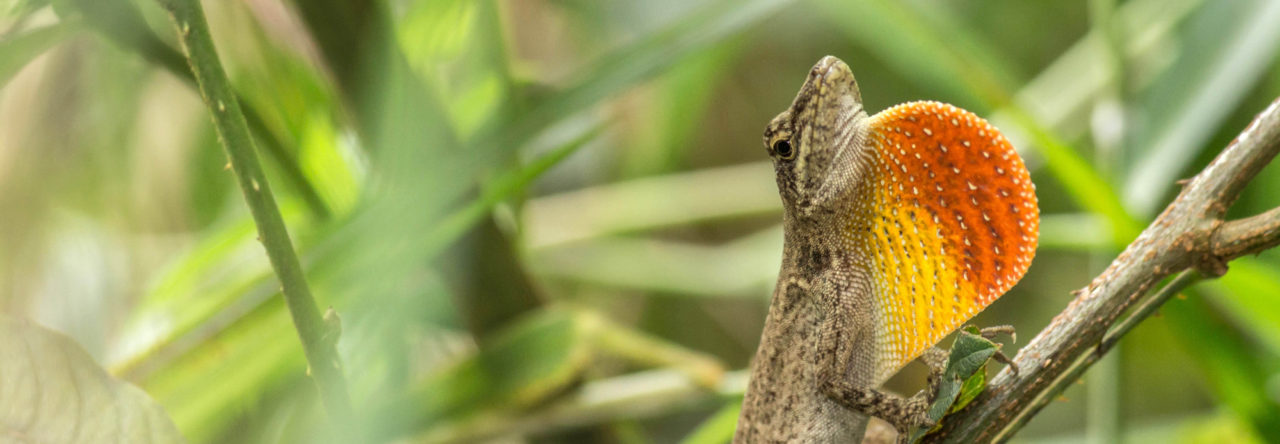Imagine you’re walking down a busy city street, talking with your friend about the latest post you read on Anole Annals. You’re getting to the most exciting part of the discussion when a bus rumbles by and drowns out your sentences. Your friend can’t hear you and loses out on amazing anole knowledge.
Animals that live in complicated environments with noisy backgrounds face similar communication challenges. The signal can be auditory – imagine a frog trying to find a mate in a multispecies chorus in a Costa Rican swamp that just received its first rain of the year. The signal can be olfactory – imagine an ant trying to follow an hour-old trail laid down by one of its sisters. The noise can be visual too – imagine a transparent jellyfish trying to find a mate in the poor light environment of the ocean.
Or, Waldo trying to find Wenda.
To ensure that communication is successful, animals should evolve signals that are highly conspicuous in the environment in which those signals are used.
Anoles are well known for their charismatic displays. They do push-ups, bob their heads, and extend a colorful flap of skin beneath their chin called a dewlap. Anoles display during territorial conflicts, courtship behavior, and predator avoidance. Anoles tend to live in very noisy environments. For example, how is a male anole displaying in the low-light forest understory to be seen against a background of shaking leaves?
One way for an anole to be seen is to create a dewlap whose color has great contrast in the light environment in which it is usually found. Another way is to use a display with jerky movements and rapid dewlap extensions that stands out even against low light and shaking leaves (Ord and Stamps 2008). A third way to be seen, discussed in a new paper by Ord et al. (2010), is to time displays to run during periods in which background noise is relatively low (i.e. the wind dies down and the leaves stop shaking). Imagine pausing your city-street conversation of anoles until after the bus had passed.
Ord et al. test whether anoles match their displays to calm backgrounds by comparing the display timing of Jamaican anoles, which use a rapid, jerky display, to Puerto Rican anoles, which use a slow, drawn out display. They hypothesize that the Puerto Rican species, with their slower head bobs and dewlap extensions, will time their displays to match a quiet background. In contrast, Jamaican species, whose display is thought to be suitable in noisy visual conditions, should show less background matching (Ord and Stamps 2008).
To answer this question, Ord et al. analyzed videos of lizard displays, comparing background noise during lizard displays to similar stretches of time when lizards were not displaying. They compared four species on Jamaica to four species on Puerto Rico. The species were similar in habitat use and dewlap color between islands, and there were no appreciable differences in the physical environment between islands.
Consistent with their hypothesis, Ord et al. found that Puerto Rican species actively avoided displaying during periods of high environmental noise; they waited until until the visual background calmed down. In contrast, Jamaican lizards did not time their displays as carefully. Thus, it appears that these two lineages of Anolis lizards have evolved different strategies to solve the problem of how to communicate in noisy visual environments.
- DNA Sequencing from Formalin-Preserved Specimens - December 16, 2014
- Sans the Claws, Anoles Present Under The Trees? - December 5, 2014
- Out Damned Spot! Or, How They’d Be Loving If They Weren’t Fighting - November 18, 2014




Leave a Reply